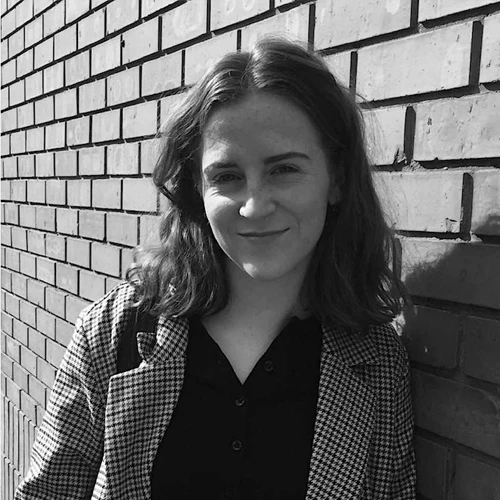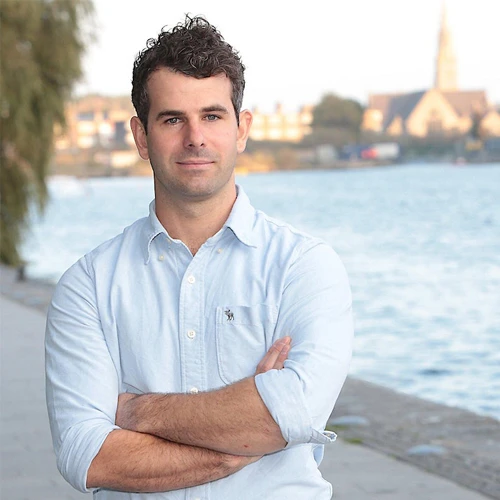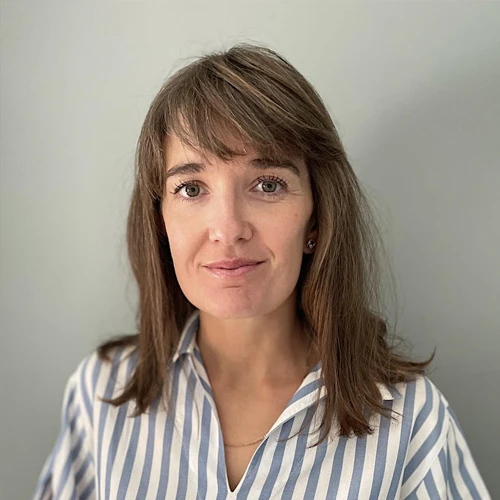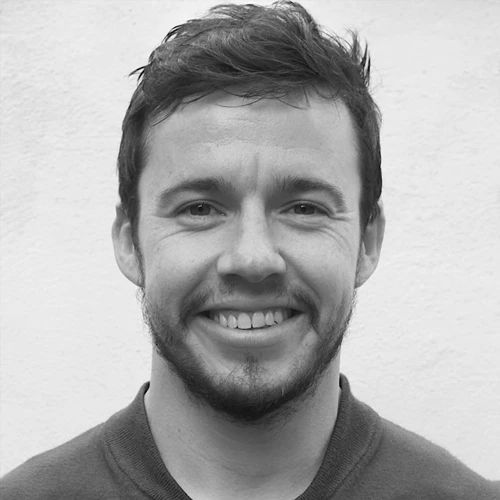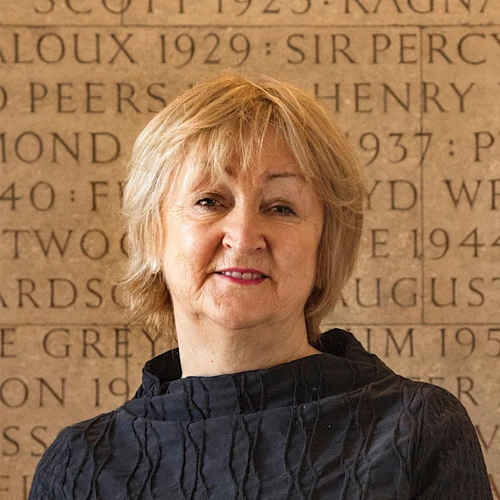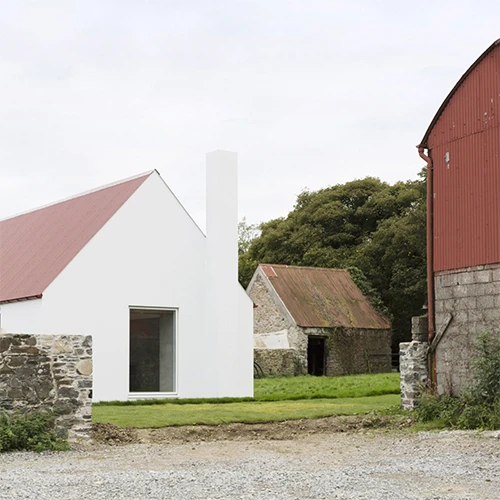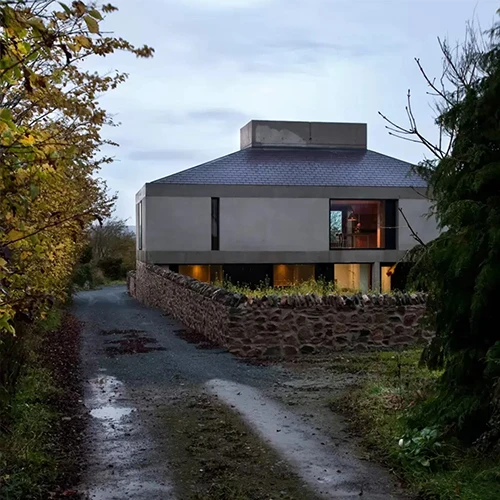Chonaiceas an brúfhógra dearg ag lonrú ar chúinne na haipe ar oíche dhorcha gheimhriúil an Feabhra seo caite: ‘Ailtireachtúil started following you.’ Bhíos fiosrach. Cérbh é an cuntas nua seo ag nascadh dhá rud is ansa liom – an Ailtireacht agus an Ghaeilge. Cén Ghaeilgeoir anaithnid a bhí taobh thiar den bhrat – bhí mistéir leis, priocadh m’aird. Faraoir, ba bheag agus b’annamh an mhéid póstála ón chuntas. Mar sin a shuigh an grúpa go ceann cúpla mí. Bhí sé ciúin agus cúthaileach, ag cogarnaíl seachas ag cumarsáid go hoscailte.
Ailtireachtúil is a group established initially on Instagram with an admirable goal of gathering a vocabulary of architectural terms as Gaeilge and connecting fellow speakers in the architectural community. While I think the mission is an important one, the first event organised by the group proved that there may be much more that could be achieved by a culturally minded movement of Irish architects.
On October 5th at Sam Stephenson’s Annex building in the redeveloped Central Plaza, Orla O’Kane, President of the AAI amongst many other hats, finally revealed her hand as the author of the group and the woman responsible for assembling a diverse panel of speakers in front of an equally varied audience. Moving from the anonymity of social media to a physical space was exhilarating and legitimising. Now we were talking.
Tara Nic Gearailt, Darragh Breathnach, Eibhlín Ní Chathasaigh, Séamus Bairéad, Yvonne Farrell, Orla O'Kane
The event began with a remarkable thesis presentation by recent SAUL graduate, Tara Nic Gearailt. Remarkable for both its architectural ambition in the proposition of a Cultúrlann for An Daingean, and for the linguistic fluency and natural ease of her description. This was a tough act for Darragh Breathnach, of DUA, to follow but his stated desire to regain a command of the language and to pass it on to his young son was rousing and his work is always a joy to see.
Eibhlín Ní Chathasaigh, of Ithirlann, had us on tenterhooks listening to a beautifully poetic description of her time in the early days of Gaelsoil Sáirséil. She spoke evocatively about the school moving locations and the impact this had on her young creative mind, describing spaces that were cúng, caol, géar and gonta. Séamus Bairéad, of Wrkshop Architects, described several town and community master planning exercises his practice has undertaken with an acute understanding of Irish towns and culture.
A slight technical mishap pushed the headline act of Yvonne Farrell ahead of lead support act Séamus. I suspect he won’t disagree in acknowledging that the true emotional crescendo of the event was reached in Yvonne’s beautiful descriptions of ceol na hailtireachta and the non-verbal language of buildings. She breezed through a description of the exemplary Downes Medal winning ESB Headquarters, rightfully placing the focus on the medium rather than the subject. There was something more important happening that evening.
Indeed, the value of the event was not in the presentation of work by the participants, but in the atmosphere present in the room. To see a master of her craft in Yvonne Farrell looking up to a graduate of a few months in Tara NicGearailt in awe and admiration at her command of the language and pride in her culture, to the extent that she was moved to tears was truly heart-rending and her analogy of her lack of fluency to a foirgneamh atá ag iarraidh caint was equally heart-warming.
There was an off-handedness, a frankness, and an element of humour to the event that is rare in architectural gatherings. In a way, the language barrier became the great leveller required to bring the participants and the audience together on a par. Varying levels of fluency necessitated presentations that were concise, simple and direct. Perhaps there is a lesson in this – a common vocabulary can create an accessibility to architecture that may otherwise be lost in the dense language we can adopt when presenting to peers.
Dwellings by Ryan W. Kennihan and Steve Larkin
A conversation followed where participants noted the additional layer of context and understanding that an awareness of language and cultural history can bring to architectural practice. The work of Steve Larkin came to mind, and the parallels he draws between traditional ‘dialects’ of fiddle playing and unique architectural characteristics on the island. Or indeed Ryan W. Kennihan’s acute observations and interpretations of vernacular built form. An American born architect who is níos Gaelaí ná na Gaeil iad féin, ironically more aware of the nuance of Irish built landscape than most.
There is great importance in maintaining this connection with our heritage as architects striving for a future that is designed and constructed in a more sustainable manner by learning from the innate wisdom of the past. The recent representation by Ireland at the Venice Biennale was explicit in this call to action. It was also unique in the decision to present the work in the Italian and Irish languages only.
So now that we’re talking, can we go one further, get a little louder? The Ailtireachtúil event took place as part of the very successful, albeit temporary, residency of the AAI at the Annex. They now revert to their usual status of no fixed abode. Similarly an aspiration has been propagated by Natalie Weadick, as former IAF president, and furthered by Emmet Scanlon, as he steps into the role, to find a more appropriate space for their needs. It gives rise to a desire and a need for a permanent home for architecture in Dublin.
Perhaps the melding of language, culture, architecture and the arts is the key to creating such a space that would be relevant to the public. Ní neart go cur le chéile, after all. Looking north to exemplar buildings such as The MAC by Hall McKnight or Cultúrlann Uí Chianáin by O’Donnell Tuomey, whose success lies in their wide cultural importance. A space serving as a house for national culture, a Cultúrlann na hÉireann, would be a magnificent addition to Dublin City.
Imagine a building that can sit with pride amongst the bustling streets of our capital, with diverse exhibition spaces, traditional music sessions in corner snugs, architecture lectures spilling out to drinks receptions, a welcoming public house to the street inviting peers and punters alike to embrace all forms of spoken, sung, designed, built, played or performed heritage.
If Ailtireachtúil can play any part in furthering a movement for a renewed cultural revival by seeking out more space for it to breathe then it will have been a roaring success.
